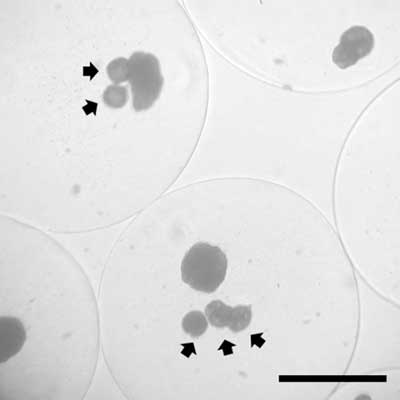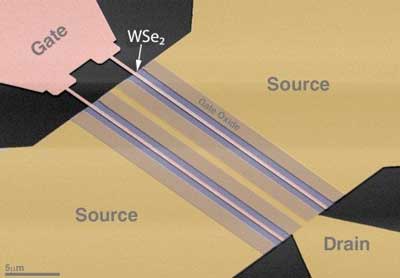
Monday, February 12, 2018
Hybrid optics bring color imaging using ultrathin metalenses into focus
Scientists announced that they have successfully combined two different imaging methods - a type of lens designed for nanoscale interaction with lightwaves, along with robust computational processing - to create full-color images.
Today's highest quality composite-piezoelectric
An international team of scientists has managed to develop a composite material that has the best piezoelectric properties today.

Tiny drug-delivering capsules could sustain transplanted insulin-producing cells
A drug-carrying microsphere within a cell-bearing microcapsule could be the key to transplanting insulin-secreting pig pancreas cells into human patients whose own cells have been destroyed by type I diabetes.

Using injectable self-assembled nanomaterials for sustained delivery of drugs
New injectable delivery system can slowly release drug carriers for months.

Cancer-fighting nanorobots programmed to seek and destroy tumors
Study shows first applications of DNA origami for nanomedicine.

Scalable two-dimensional materials advance future-gen electronics
Researchers have developed a multistep process to make single crystal atomically-thin films of tungsten diselenide across large-area sapphire substrates.

Preventing the tip of a scanning tunneling microscope from crashing into the surface of a material
Scientists believe they have addressed a long-standing problem troubling scientists and engineers for more than 35 years: How to prevent the tip of a scanning tunneling microscope from crashing into the surface of a material during imaging or lithography.

New process allows 3-D printing of nanoscale metal structures
Synthesizing organic scaffolds that contain metal ions enables 3-D printing of metallic structures that are orders of magnitude smaller than previously possible.

Researchers invented light-emitting nanoantennas based on halide perovskites
Researchers have managed to combine a nanoantenna and a light source in a single nanoparticle. It can generate, enhance and route emission via excited resonant modes coupled with excitons.

Researchers invented light-emitting nanoantennas based on halide perovskites
Researchers have managed to combine a nanoantenna and a light source in a single nanoparticle. It can generate, enhance and route emission via excited resonant modes coupled with excitons.

Rubber blanket at an atomic level
Scientists have successfully measured the distortions in 2D materials at microscopic level, which means it is now possible to observe precisely (point for point) how the properties of a material may be altered as a result of a simple distortion.

Subscribe to:
Posts (Atom)
